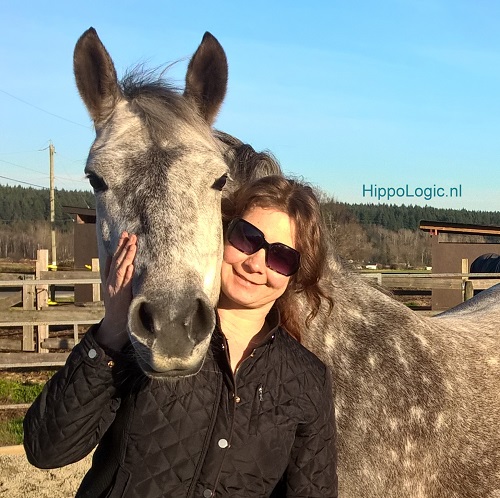When your horse has or had laminitis, one of the recommendations you’ll get from your vet is to exercise your horse, so he’ll lose weight.
Where to start?
Before you start exercising
- Make sure that the trigger for laminitis is identified and removed
- Your horse is off all pain medication
- You have a tested (low sugar) and balanced diet in place
- Your vet has given you clearance for exercising your horse
Start where your horse is at
You may have to start really short walks in hand. With short I mean 5 minute walks. You can gradually build duration. Keep in mind that even a little exercise is better than none!
We have to start our horse somewhere. Starting with a short exercise regime can also help us build the habit of exercising our horse on a very regular basis!
Make exercising appetitive (fun!) for your horse
Exercising can be hard for overweight horses! They might not enjoy it. Using positive reinforcement can really help shift this for your horse.
In positive reinforcement training, you strengthen a behaviour by giving your horse something valuable for what he just did. When you use a bridge signal to ‘bridge’ the time gap between the desired behaviour and the moment you’re able to deliver a treat, your horse will pay attention to what he just did and do more of that behaviour.
Here is how you start clicker training your horse.
Use positive reinforcement to help your horse move
When your horse doesn’t want to move you can wait until he does a slight weight shift forwards, then click and give a treat. With a ‘treat’ I mean a sugar free food reward, something that is low calorie, yet still yummie for your horse.
The next step is to click for a step forwards. This way you can literary raise your criteria for a click and treat, step-by-step. That’s how I did it with Kyra. She was already clicker trained, so she understood that she had to take initiative and move.
I found it very rewarding to use clicker training to exercise my laminitis horse, because she didn’t want to move in the first place. Using force would have negatively impacted my good relationship with Kyra and I didn’t want that to happen. I’ve tried it at first, but it was clearly the wrong choice for us! She resented lunging and working at liberty in the round pen, so I had to come up with alternative ways. And I did.
Do you struggle with exercising your overweight horse and help get your fat horse fit?
Make sure you find a tribe that understand the struggles that you’re going through. When you are a clicker trainer, it can be extra challenging to exercise your horse using food rewards, because the majority of people, including vets an farriers, don’t understand this training method. They only see a horse that struggles with movement AND that gets ‘treats’.
Happy Horse training!
Sandra Poppema, HippoLogic

New to Clicker Training?
Get my Confident Clicker Trainer course, an high quality, extended online program that teaches you to clicker train your horse.
No matter when you’re new or already advanced (clicker training 2-6 years) this course will offer you many new angles and approaches to enhance and deepen your skills.
You’ll get:
- My proven R+ training step-by-step system that gives you predictable results (It tells you when and how to introduce a cue, when and how to strengthen a behaviour, raise your criteria and get behaviour under stimulus control and so on)
- Includes 6 Keys to Success for Trainers from creating Accountability to Shaping plans
- 8 Modules to teach your horse 6 basic behaviours, the Key Lessons for Horses, that will help you train all future behaviours faster
- Tons of instruction and step-by-step training videos




You must be logged in to post a comment.